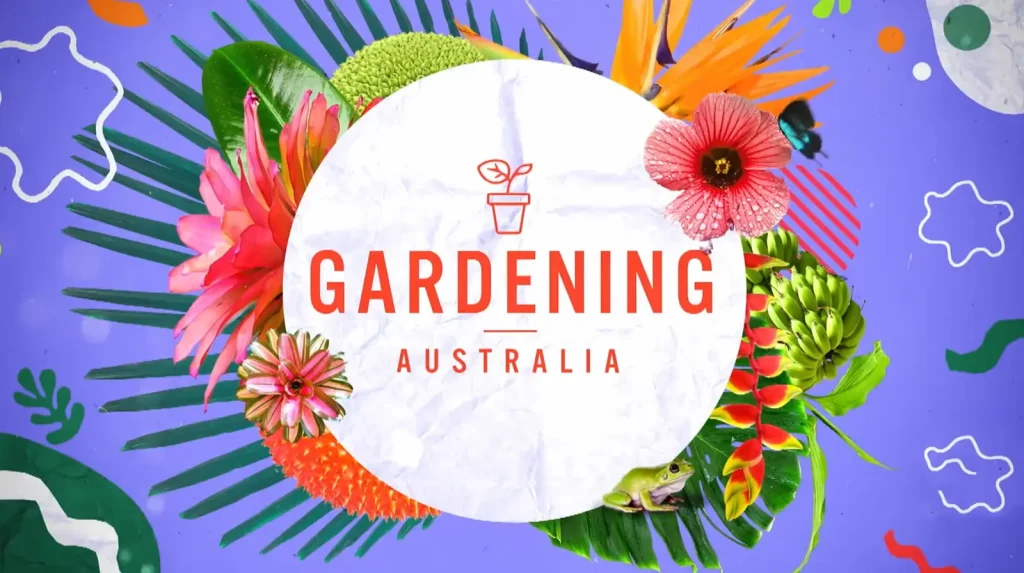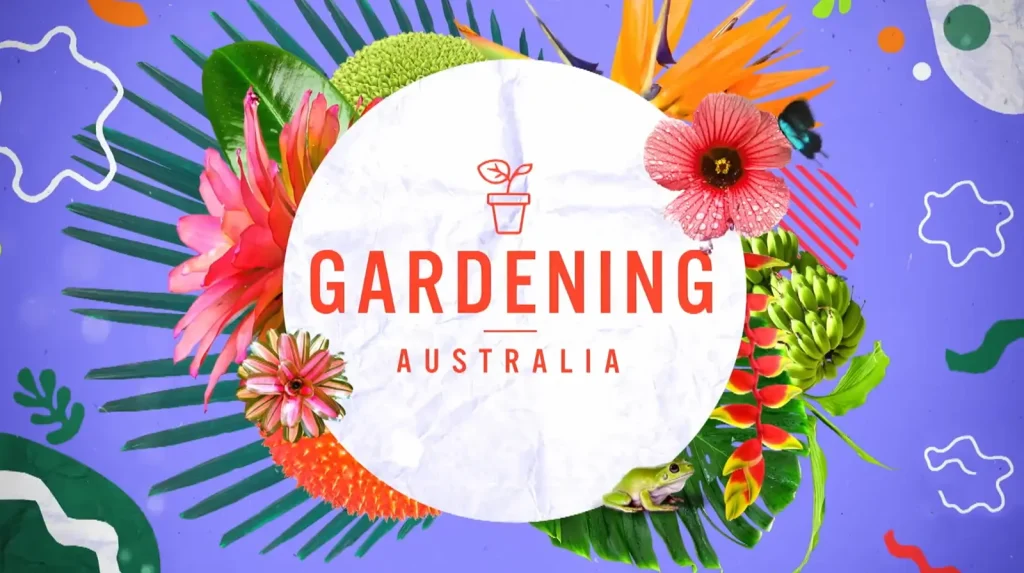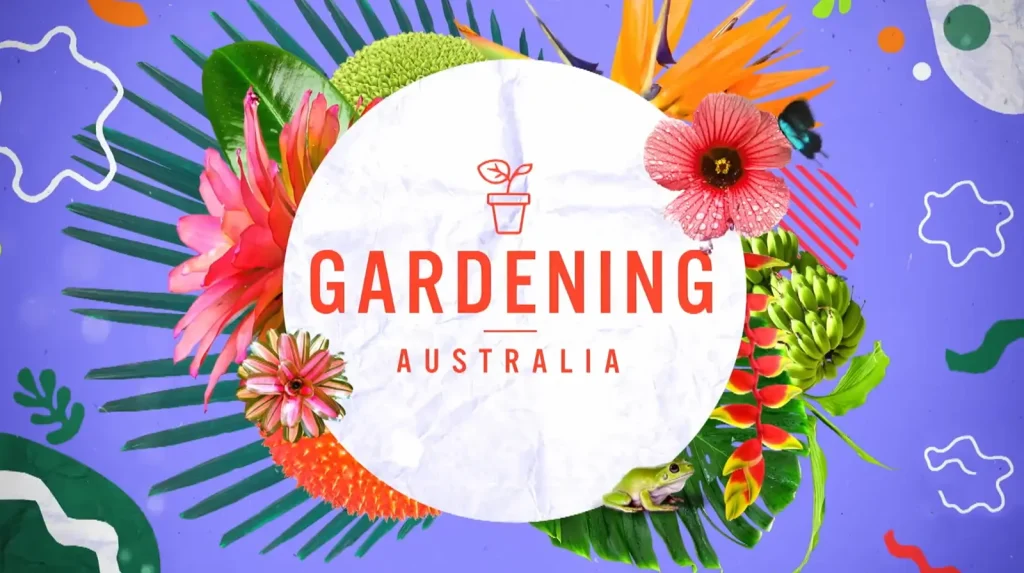Gardening Australia 2024 Episode 32 dives into spring gardening with fresh, practical advice on container-grown vegetables, the art of leek cultivation, and the endless beauty of flowering native shrubs. This episode brings us inspiring visits and valuable gardening tips, ideal for beginners and seasoned green thumbs alike. From growing vegetables in pots to exploring the unique benefits of bamboo, the show provides an informative, hands-on guide to sustainable and organic gardening practices perfect for any setting, whether a sprawling backyard or a compact urban balcony.
First, host Costa takes on container gardening, showing us how to grow vegetables in pots effectively. With insightful tips on choosing the right containers, he explains the best vegetables for pots, such as leafy greens, tomatoes, and of course, the resilient and tasty leek. This segment is perfect for those without much ground space, giving viewers sustainable solutions to cultivate fresh, healthy vegetables at home. “Growing crops in pots can yield surprisingly generous harvests,” Costa explains, highlighting how container gardening has revolutionized home gardening for beginners and experts alike. His advice emphasizes organic gardening methods, which help ensure that your produce is both eco-friendly and delicious.
Meanwhile, Jerry explores a local bamboo nursery, bringing insight into the world of bamboo varieties and their diverse uses in the garden. Often underestimated, bamboo offers more than aesthetic appeal. It provides a sustainable, fast-growing solution for privacy screens, windbreaks, and even shade. Jerry’s visit unveils the different types of bamboo suited to various climates and garden layouts, including dwarf varieties for small gardens and towering types for larger landscapes. His detailed look at bamboo gardening offers viewers practical advice on selecting, planting, and maintaining bamboo, making it an ideal segment for gardeners interested in sustainable landscaping.
Jane, on the other hand, delves into flowering native shrubs that bring color and wildlife to the garden. With a focus on native Australian plants, she shares her expertise on which shrubs work best in small gardens, combining beauty with biodiversity benefits. These plants, including popular species like bottlebrush and grevillea, attract pollinators like bees and butterflies, helping to create a balanced ecosystem right in your backyard. Her segment not only provides valuable gardening ideas but also highlights the role of native shrubs in preserving Australia’s natural heritage. For those outside of Australia, Jane’s tips on flowering native plants can be adapted to include local species, enhancing any garden’s appeal and ecological impact.
Clarence adds to the theme of native gardening by demonstrating effective pruning techniques for native shrubs. His hands-on guidance covers the tools, timing, and methods required to keep these shrubs healthy and thriving. Pruning, as Clarence explains, helps to encourage new growth, maintain the plant’s shape, and boost flowering. He simplifies the process, making it accessible for viewers new to pruning, while also offering advanced tips for experienced gardeners looking to perfect their technique. This segment aligns with gardening tips that ensure native plants not only survive but thrive in varied garden settings, whether wild or cultivated.
Gardening Australia 2024 Episode 32
Adding a unique twist to the episode, a guest presenter shows viewers the art of perennial propagation. Perennials, known for their ability to return year after year, offer gardeners an economical and eco-friendly option. The segment walks through the steps of dividing perennials, selecting the right tools, and choosing the best time for propagation. This practical advice opens up new gardening possibilities, enabling viewers to expand their plant collection without spending a fortune. Perennial propagation, especially of easy varieties like daylilies and irises, can add life to your garden season after season, making it an invaluable skill for any gardening enthusiast.
In the final segment, the show dives into the microscopic world of plants. Plants under the microscope reveal intricate details that are usually hidden from the naked eye. This fascinating segment gives viewers a closer look at leaf structures, plant cells, and even tiny organisms that support plant health. By understanding plants at a cellular level, viewers gain a deeper appreciation for the complexities of the natural world and the importance of sustainable gardening practices.
Overall, Episode 32 of Gardening Australia is packed with valuable information, hands-on demonstrations, and inspiring ideas for gardeners of all levels. With its focus on spring gardening, this episode guides viewers through everything from growing vegetables in containers to the rewarding experience of cultivating native shrubs and bamboo. As viewers tune in, they’ll not only learn practical gardening tips but also discover the joy of creating a garden that supports both people and the planet. Whether you’re a novice or a seasoned gardener, this episode offers a fresh perspective on nurturing nature right at home.
Why Do Cacti Shrivel Up?
Think of cacti as living water reservoirs. These plants have evolved to store copious amounts of water in their thick, fleshy stems, which allows them to withstand the harsh conditions of their native desert habitats. It’s as if they’re carrying a portable water tank inside, ready to be used drop by drop during long dry spells.
However, even the most resilient cacti have their limits. If your cactus begins to appear wrinkly or shriveled, it’s waving a subtle flag that says, “I’m thirsty!” This isn’t a cause for alarm – it’s actually your cactus communicating that it has used up much of its stored water and needs a refill. When this happens, all you need to do is give your cactus a good watering. If the cactus isn’t too far gone, it will soon swell back up, its skin smoothing out as it rehydrates, much like a sponge that’s been soaked in water.
Imagine the way a cactus’s body plumps up after receiving moisture, much like a balloon filling with air. It’s one of nature’s incredible mechanisms to help these plants bounce back from the brink of dehydration. But timing is everything. Leaving a cactus too long without water can lead to more serious damage, making it harder for the plant to recover.
The Science of Hybrid Vigor
Now, let’s explore the world of plant breeding – a space filled with careful choices and meticulous crossing. You may have heard of the term “hybrid vigor” and wondered what it means. Picture two parent plants, each with their own strengths. Perhaps one is disease-resistant while the other grows exceptionally fast. Plant breeders aim to create a hybrid, combining the best traits from both parents. This process is like mixing two great recipes to create a dish that’s even more delicious than either of the originals.
Hybrid vigor, scientifically known as “heterosis,” is what happens when the resulting offspring are healthier, more productive, or simply stronger than either of their parents. Imagine a champion racehorse – its speed and endurance might come from the perfect blend of its lineage. Hybrid plants follow the same principle. These hybrids often grow more vigorously, produce more flowers or fruits, and show greater resistance to pests and diseases. It’s as if the hybrid inherits superpowers from each parent, making it the hero of the plant world.
This phenomenon can be seen across the plant kingdom, from garden flowers to essential food crops. Corn, for example, is often bred this way to maximize yield, ensuring farmers can harvest more from each acre. Hybrid vigor is nature and science working hand in hand to create plants that can flourish against the odds.
The Secret Behind Small Leaves
Have you ever noticed that some plants have particularly tiny leaves? These aren’t stunted or underdeveloped leaves; they’re part of the plant’s survival toolkit. In botanical terms, these are called “reduced leaves,” and they’re designed to help plants adapt to tough conditions.
Reduced leaves are more common in plants that live in extremely hot or windy environments. In such climates, having large, lush leaves can be a liability. Why? Because leaves lose water through tiny pores known as stomata. The larger the leaf, the greater the surface area, and consequently, the more water that evaporates. In a dry, scorching desert or on a windswept mountainside, water is precious, and any excess loss could mean the difference between life and death for a plant.
To put it simply, small leaves are a plant’s way of conserving water. They’re like nature’s version of efficient packaging – minimizing waste while ensuring the plant gets what it needs to survive. Imagine a traveler heading into the desert, equipped with just enough supplies to make it through without any excess to weigh them down. In the same way, these plants are adapted to carry just enough greenery to photosynthesize, while minimizing water loss.
Some plants, like cacti, take it even further by essentially doing away with traditional leaves altogether, turning them into spines. These spines not only reduce water loss but also offer protection against herbivores. It’s as if the plant is wearing armor, shielding itself from both the elements and hungry predators.
The Magic of Adaptation in Nature
Each of these examples – from cacti shriveling to hybrid vigor to reduced leaves – demonstrates the incredible ways plants have adapted to survive and thrive. They’ve evolved to overcome the challenges thrown at them, whether it’s an arid desert, the need for more productive offspring, or a relentless sun beating down from above.
When we look at a cactus plumping up after a much-needed watering, we’re not just seeing a thirsty plant; we’re witnessing the power of adaptation in action. When a hybrid crop yields a bountiful harvest, it’s not just about better seeds; it’s about the triumph of careful breeding and the wonders of hybrid vigor. And when we notice the tiny leaves of a hardy plant clinging to life in a harsh environment, we’re seeing a masterpiece of nature’s efficiency.
Nature is full of these small but significant wonders – plants adapting in ingenious ways to the world around them, ensuring they not only survive but often thrive in the most challenging circumstances. From desert cacti to hybrid crops, every plant tells a story of resilience, adaptation, and the remarkable ability to evolve.
So next time you water your cactus or admire a hybrid flower in your garden, take a moment to appreciate the incredible journey that plant has taken to reach your home. It’s more than just a bit of greenery; it’s a testament to the power of life itself, always finding a way to flourish, even in the toughest conditions.
Conclusion Gardening Australia 2024 Episode 32
Gardening is more than a pastime; it’s a journey into nature’s wonders, where every plant tells a unique story of resilience, adaptation, and beauty. Episode 32 of Gardening Australia reminds us that, whether we have acres of land or a tiny balcony, there’s always room for growth, creativity, and connection with the natural world. By showing us how to grow vegetables in pots, harness the benefits of bamboo, and embrace native shrubs, this episode provides not only practical guidance but also inspires a deeper appreciation for the ecosystem we nurture in our gardens.
Costa’s container gardening segment opens the door to growing fresh produce even in the smallest spaces, making sustainability accessible to everyone. It’s a wonderful reminder that even a pot on a windowsill can contribute to our well-being and the planet’s health. Jerry’s exploration of bamboo introduces an often-overlooked garden ally—both useful and elegant. His insights encourage us to see beyond aesthetics and consider bamboo’s environmental benefits and versatility.
Jane’s deep dive into flowering native shrubs paints a picture of gardens that are not only visually stunning but also buzzing with life. Native plants are the heart of a balanced ecosystem, attracting bees, butterflies, and other wildlife, ultimately connecting our backyards to the broader natural landscape. Her practical yet poetic approach highlights the joy of inviting local biodiversity into our spaces. Similarly, Clarence’s pruning tips ensure that these native plants stay vibrant, reinforcing the idea that careful nurturing yields both beauty and health in our gardens.
The guest segment on perennial propagation adds a touch of magic—allowing gardeners to multiply their favorite plants, transforming one bloom into many. This simple yet powerful technique embodies the cyclical nature of gardening—growth, renewal, and the passing of seasons. The final microscopic look at plant structures offers a profound perspective, helping us appreciate the unseen intricacies that support the greenery around us.
In conclusion, this episode of Gardening Australia does more than teach; it inspires us to cultivate a meaningful connection with our environment, one plant at a time. No matter our skill level, gardening gives us a chance to play a role in sustaining the earth, beautifying our surroundings, and finding peace in nature’s rhythms. Every plant we nurture, every bloom we cherish, brings us one step closer to a greener, more harmonious world.
FAQ Gardening Australia 2024 Episode 32
Q: What is special about Gardening Australia 2024 Episode 32?
A: This episode focuses on spring gardening, offering practical advice for both novice and experienced gardeners. It covers diverse topics, from growing vegetables in containers to cultivating native shrubs and bamboo. Furthermore, it explores sustainable and organic gardening practices, making it relevant to various gardening styles and settings.
Q: I don’t have a lot of space. Can I still grow my own vegetables?
A: Absolutely! Episode 32 features a segment on container gardening with host Costa. He provides valuable tips on growing vegetables in pots, even if you have limited space. He discusses suitable vegetables for pots, such as leafy greens and tomatoes, and offers advice on choosing the right containers for optimal growth.
Q: What are the benefits of growing bamboo, and is it suitable for my garden?
A: Bamboo is a versatile and sustainable plant with numerous benefits. In this episode, Jerry visits a bamboo nursery and explores various bamboo varieties and their uses. Bamboo can act as a privacy screen, windbreak, or shade provider. Moreover, it comes in different sizes, making it adaptable to both small and large gardens.
Q: How can I attract more wildlife to my garden?
A: Jane focuses on flowering native shrubs in this episode, highlighting their ability to attract pollinators like bees and butterflies. By incorporating native plants into your garden, you can create a haven for wildlife and contribute to a balanced ecosystem. Jane also provides guidance on selecting shrubs that thrive in different garden settings.
Q: My native shrubs look overgrown. How do I prune them correctly?
A: Clarence demonstrates effective pruning techniques for native shrubs in this episode. He covers essential aspects like the appropriate tools, timing, and methods for pruning. By following his guidance, you can ensure your shrubs remain healthy, maintain their shape, and produce abundant flowers.




